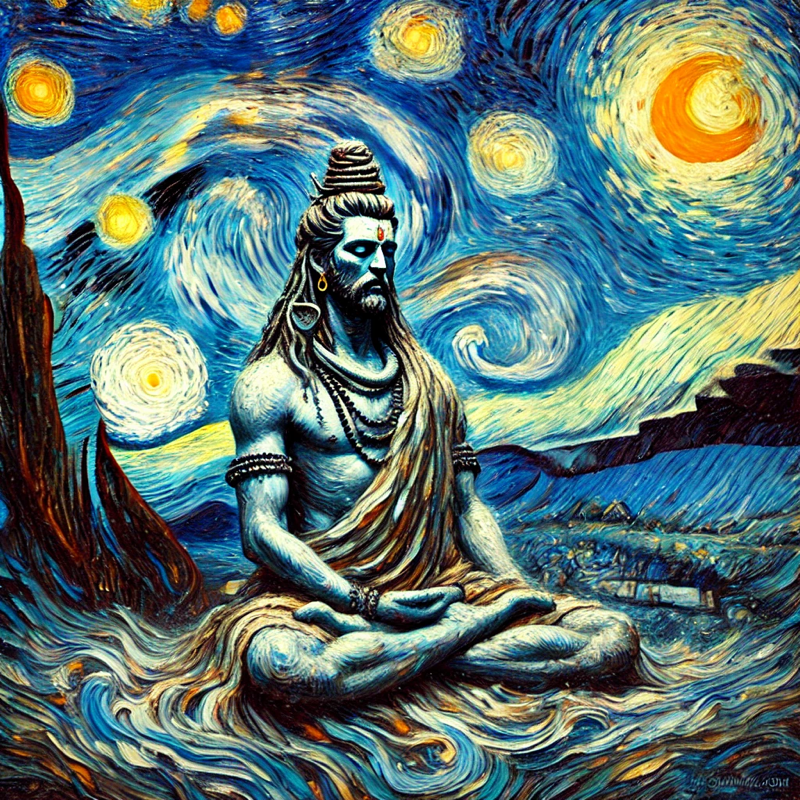Lord Shiva: The Stigmatized God Who Rose Above It All

Lord Shiva, one of the principal deities of Hinduism, is known as the Supreme Destroyer and Transformer. He is revered as the embodiment of asceticism, yet paradoxically, he is also the god of dance, passion, and creation. Despite his divine stature, Shiva has often been perceived as an outsider, misunderstood and stigmatized for his unconventional ways. His life is a testament to transcending societal judgment and embracing one's true nature. This post explores key instances where Lord Shiva faced stigma and how he emerged stronger each time.
The Stigma of the Ascetic Outsider
Unlike other gods who adorned themselves in gold and silk, Shiva lived in cremation grounds, smeared his body with ash, and wore rudraksha beads. His appearance—matted hair, a serpent around his neck, and a tiger skin as his garment—made him an anomaly even among the divine. Society viewed him with suspicion, labeling him as an outcast, a wild hermit with unpredictable behavior. Yet, Shiva remained unaffected, proving that wisdom and divinity are beyond superficial appearances.
The Stigma of His Marriage to Sati and Parvati
Shiva’s marriage to Sati, the daughter of King Daksha, was another source of stigma. Daksha disapproved of his son-in-law’s ascetic lifestyle and lack of material wealth. He went so far as to publicly insult Shiva, leading to Sati’s self-immolation in protest. This tragic event further alienated Shiva, but he channeled his grief into deep meditation, symbolizing resilience in the face of societal rejection.
Later, when he married Parvati, the daughter of the Himalayas, he was again judged for his austere life. Yet, Parvati saw beyond the stigma and recognized Shiva’s boundless love and wisdom. Their union became a symbol of balance between asceticism and worldly engagement.
The Stigma of His Unconventional Devotees
Shiva has always welcomed devotees from all walks of life—demons, ghosts, outcasts, and even animals. Unlike other gods who were primarily worshipped by sages and kings, Shiva was revered by those whom society shunned. This inclusiveness often led to criticism, as he was seen as a god of the marginalized rather than the elite. However, Shiva’s acceptance of all beings reinforced the idea that divinity does not discriminate.
The Stigma of His Fierce and Unruly Nature
Shiva’s anger and destructive power were also misunderstood. When he performed the Tandava dance in rage, it was seen as a force of chaos rather than cosmic balance. His form as Bhairava, with a terrifying appearance and a skull in his hand, was feared rather than revered. Yet, Shiva’s destruction was always meant for renewal, and those who understood his ways saw him as the ultimate force of justice and transformation.
Lessons We Can Learn from Shiva’s Stigma
- Authenticity Over Approval – Shiva never altered himself to fit societal expectations. His life teaches us to embrace our true nature despite judgment.
- Resilience in the Face of Rejection – Whether in love or devotion, Shiva never let stigma define him. He remained unwavering in his purpose.
- Compassion for All – By accepting all beings, Shiva demonstrated the power of inclusivity and unconditional love.
- The Balance of Destruction and Creation – Life is a cycle of endings and new beginnings. Shiva’s ability to destroy only to rebuild reminds us that setbacks often lead to transformation.
Conclusion
Lord Shiva’s life is a powerful reminder that stigma and judgment are mere illusions in the grand cosmic dance. He teaches us that being different is not a flaw but a strength. His story is one of resilience, authenticity, and an unwavering commitment to truth. In a world that often fears the unconventional, Shiva stands as a beacon of self-acceptance and divine transcendence.
